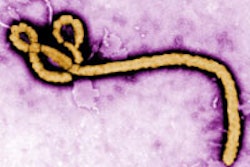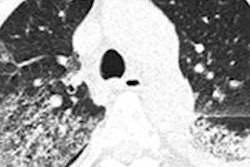
LAS VEGAS - H1N1 flu, or swine flu, has been in the news all year, with the U.S. Centers for Disease Control and Prevention (CDC) and the World Health Organization (WHO) issuing frequent bulletins on how both healthcare workers and the public can ride out what appears to be a growing epidemic.
But it's not just swine flu that menaces public health, even in healthcare environments: Severe acute respiratory syndrome (SARS), avian flu, norovirus, meningitis, methicillin-resistant Staphylococcus aureus (MRSA), and, of course, hepatitis and HIV can all be passed between healthcare professionals and patients.
Infection control is an increasingly important healthcare issue, and it's particularly crucial in the imaging department, according to Lyn Mehlberg, quality and safety specialist for diagnostic, cardiovascular, and radiation oncology services at Aurora BayCare Medical Center in Green Bay, WI.
And preventing infection isn't just good medicine, it affects a department's bottom line. Last year, the U.S. Centers for Medicare and Medicaid Services (CMS) issued a policy change that states the agency will reduce or cease payment for care made necessary by certain "preventable complications, or healthcare-associated infections," Mehlberg said.
"For years, infection control has been an afterthought in healthcare, especially in areas outside of surgery, ICU, patient units, and interventional radiology," she told attendees at the American Healthcare Radiology Administrators (AHRA) annual meeting this week in Las Vegas. "No one really wants to think about germs in our working environment, and everyone believes they're doing all they can to prevent the spread of infection."
Harping on hand washing
With public awareness of infectious outbreaks and sterility breaches, more organizations, including the U.S. Occupational Safety and Health Administration (OSHA), CDC, Joint Commission, WHO, and CMS have sharpened their focus on healthcare and radiology regulations, standards, and guidelines.
"With regulators and with Medicare, radiology has a bull's-eye on its back," Mehlberg said. "It's an open target. But the good news is that many healthcare-associated infections can be prevented by the simple strategy of a stronger commitment to good hand hygiene," Mehlberg said.
If you took a survey of your department, probably most staff members who deal directly with patients would say they are vigilant about hand washing. But studies show that the majority of healthcare workers spend only five seconds washing their hands; one study showed that healthcare personnel contaminate their own hands while removing gloves, with 29% of workers being found with the patient's strain of vancomycin-resistant enterococcus (VRE) on their hands, most likely coming from a patient's feces, Mehlberg said.
"Rapid hand washing has no significant effect on transient pathogens," she said. "Hands must be washed for at least 15 seconds to be effective -- that's two verses of 'Happy Birthday.' "
Washing for an appropriate length of time, with soap and hot water, is a start, Mehlberg said. But radiology departments also need to monitor their employee's fingernail health: Those with direct patient duties may not wear artificial nails or extenders, and if there is nail polish, it must be intact.
The CDC maintains a confidential database for benchmarking healthcare-associated infections called the National Healthcare Safety Network (NHSN), which allows healthcare providers to compare infection rates with those of other, similar providers.
Proactive prevention
Mehlberg listed various ways that imaging departments can minimize risk of infection, all of which are in accordance with guidelines set out by the Joint Commission, U.S. Pharmacopeia, CDC, and WHO:
- Make sure sufficient gel stations and bottles are available.
- Re-educate staff on proper hand hygiene technique.
- Develop a documentation and observation monitoring program.
- Be aware that wet, gelled hands may induce shock when touching scanners or equipment.
- Remove gloves to use common work area equipment or supplies such as keyboards and telephones.
- Clean any surfaces and equipment that is touched by the employee's hands during the care of the patient (keyboard, mouse, tabletops, and counters).
- Clean any surfaces and equipment that are touched by the patient (wheelchairs, carts, imaging tables, bores, controls, and positioning aids).
- Clean any surfaces and equipment that are splashed or sprayed during a procedure.
- Make sure staff is comfortable with isolation protocols.
- Invite an infection control specialist to give an in-service training presentation.
- In the MRI scanner room, clean inside the bore of the magnet.
"The rampant spread of infection is seriously burdening the entire infrastructure of healthcare," Mehlberg said. "And there are major incentives to address these infections. The key to breaking the chain of infection transmission is practicing standard precautions and solid hand hygiene."
By Kate Madden Yee
AuntMinnie.com staff writer
August 10, 2009
Related Reading
Survey: MRI centers lack infection control, May 28, 2009
FDA warns of sandbags in MRI suites, April 3, 2009
U.S. FDA warns against wearing skin patch during MRI, March 6, 2009
Joint Commission may survey for MRI safety, March 5, 2009
11 steps for preventing MRSA infections in MRI, November 6, 2008
Copyright © 2009 AuntMinnie.com




















